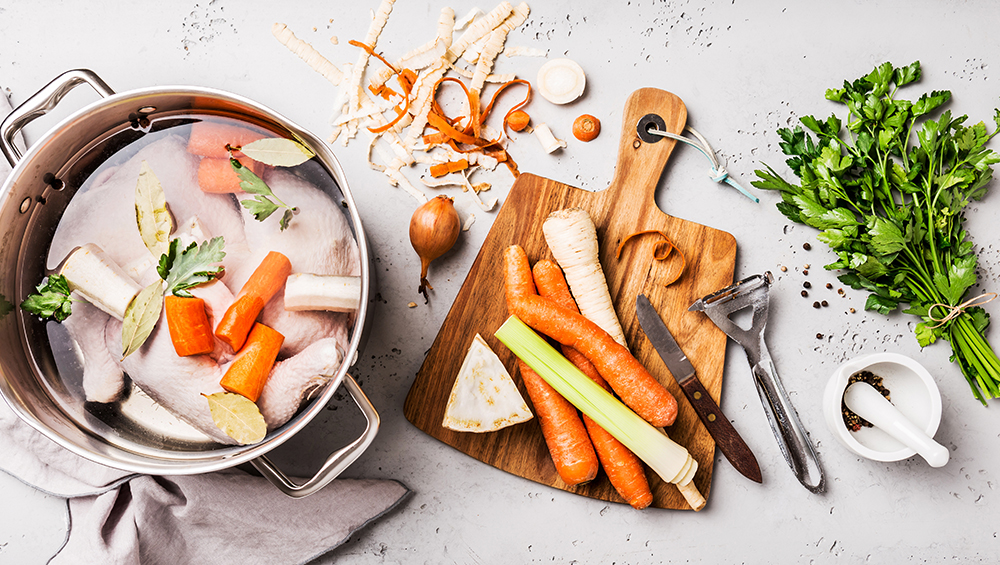By eating only part of a vegetable, you’re only getting part of the nutritional benefits
As anyone who has ever had a vegetable garden knows, from seedling to bud to harvest time, it’s rewarding to watch a vegetable grow. Sadly, as much as we may appreciate them, large amounts of these vegetables wind up in the garbage. According to the United States Food and Drug Administration, 30-40 percent of the country’s food supply goes wasted.
Vegetables are no exception. “In general, most people only eat about 50 percent of the edible parts of vegetables,” says Rhonda Krick, MA, RD, dietitian in private practice in Los Angeles.
It’s no fault of our own—most of us don’t realize we can eat the whole vegetable. And by not eating the whole vegetable, we are missing out. “All parts of a vegetable deliver nutrients, and in many cases, the uncommon parts deliver the same nutrients as other commonly eaten portions of the plant,” says Molly Morgan, RDN, CDN, owner of Creative Nutrition Solutions.
To help you get the most from your precious veggies, here are six surprising parts of vegetables you didn’t know you could eat, and how to eat them.
- Carrot leaves. “Not only are carrot leaves edible, they contain fiber, potassium, and vitamins A, C, and K,” Krick says. She adds you can also eat the leaves of many other vegetables, including cauliflower, pumpkin, squash, and sweet potato. Wondering what to do with carrot leaves? “Because they have a slightly bitter taste, you can add them to salad and soup, and you can even use them to make pesto,” Krick says.
- Broccoli, kale, and Swiss chard stems. You may be tempted to cut them off and throw them away as you’re dicing these super foods, but you should hold back. “Kale, Swiss chard, and broccoli stems can all be eaten,” Krick says. Broccoli stems contain most of the same nutrients as the florets, including iron, phosphorus, potassium, zinc, folate, and vitamins A, B6, B12, D, E and K. “To add some flavor and extra nutrients, throw broccoli or kale stems into your homemade juice or smoothie,” she says.
- Celery tops. “Celery tops are tender and full of flavor–perfect for adding a punch of taste to tuna salad or pesto,” Morgan says. The flavor of celery leaves is similar to the stalks—earthy, savory, and salty (celery naturally contains sodium). Nutrition-wise, celery leaves are good sources of dietary fiber, as well as vitamins A, C, and K.
- Radish greens. Radish greens are low in calories and a good source of fiber, protein, potassium, iron, magnesium, and vitamins C and K. “You can sauté radish greens with olive oil and eat them as a side dish or wash and chop them to combine with other leafy greens to add texture to salad,” Morgan says.
- Cauliflower stems and leaves. The stems of broccoli’s cousin, cauliflower, serve up protein, fiber, and vitamins C, and K. And the leaves contain fiber, vitamin C, as well as some vitamin A, calcium, and folate. “You can roast cauliflower stems and leaves and toss them in almost any dish, or chop them and add them to soup,” Morgan says.
Onion skins. Yellow onion skins add vibrant color and flavor to homemade vegetable stock. Instead of clogging up your garbage disposal with the skins next time you chop an onion, save them in a plastic bag with other vegetable parts, such as pea pods, asparagus tips, and broccoli and mushroom stems, and use them the next time you make a vegetable broth.
 Mindful Sodexo
Mindful Sodexo 

0 Comments